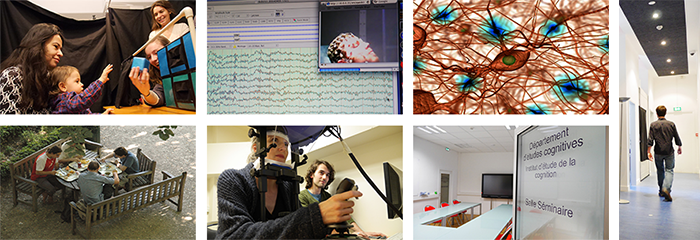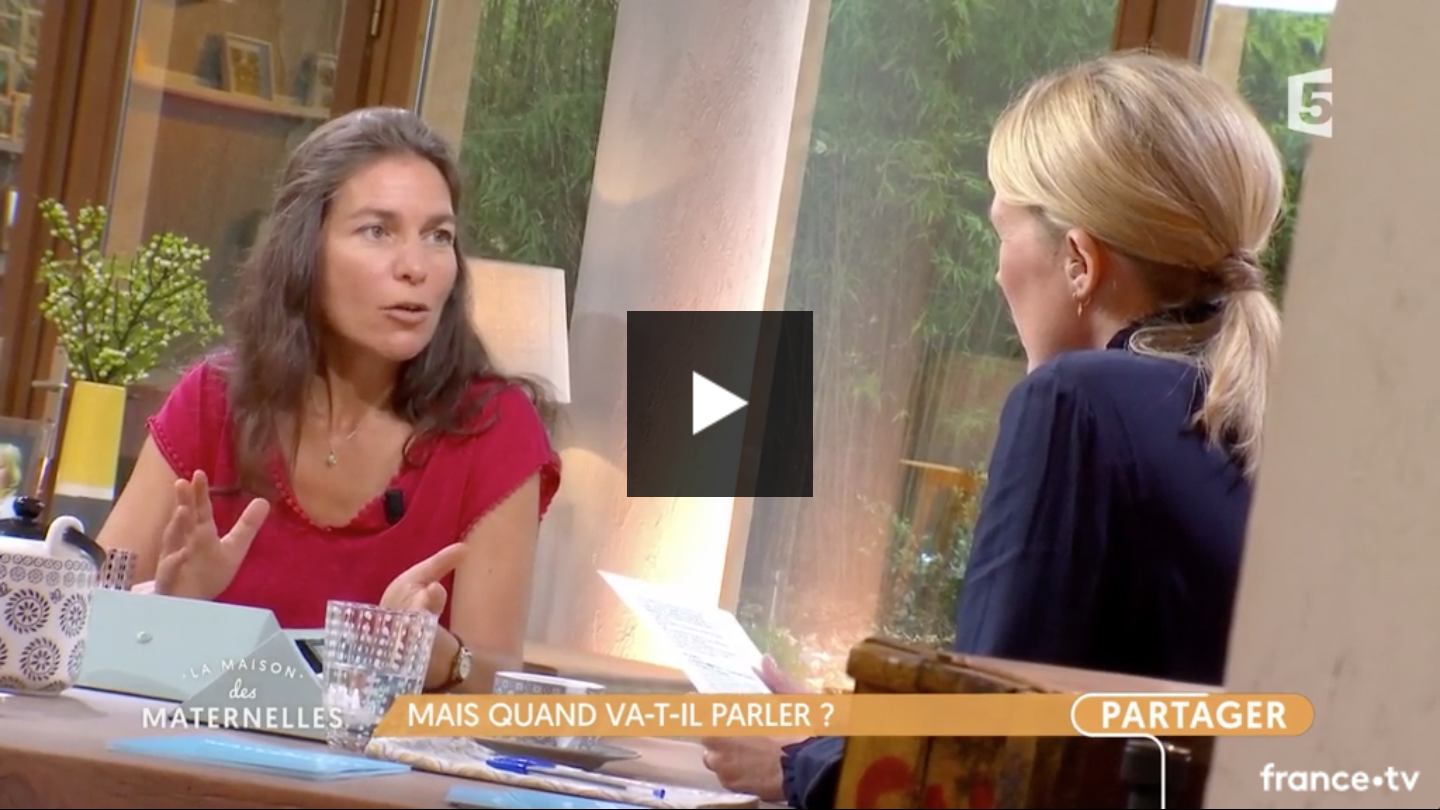A LA UNE
"Frontiers in Cognition", parmi les lauréats de l'appel à projet Ecole Universitaire de Recherche
"Frontiers in Cognition", un projet d’Ecole Universitaire de Recherche (EUR) à PSL, a été sélectionné par le jury international.
 "Frontières de la cognition" permettra d’augmenter l’attractivité des études au DEC sur le plan international grâce
à un programme de bourses de cinq ans, une offre de formation enrichie, et des partenariats internationaux favorisant
la mobilité des étudiants et la collaboration avec des centres de recherche du plus haut niveau. La recherche appliquée
sera renforcée en lien avec des partenaires industriels.
"Frontières de la cognition" permettra d’augmenter l’attractivité des études au DEC sur le plan international grâce
à un programme de bourses de cinq ans, une offre de formation enrichie, et des partenariats internationaux favorisant
la mobilité des étudiants et la collaboration avec des centres de recherche du plus haut niveau. La recherche appliquée
sera renforcée en lien avec des partenaires industriels.
"Frontiers in Cognition" s’appuiera sur le Master recherche en sciences cognitives, qui articule formation scientifique et
immersion dans la recherche de pointe au moyen de nombreux stages, ainsi que sur le Collège Doctoral de PSL.
L’EUR reposera également sur une synergie avec d’autres départements de l’ENS et institutions partenaires de PSL.
Lire l'article paru le 26/10/2017 sur le site lemonde.fr
PRIX
Uriah Kriegel (IJN) lauréat du prix Humboldt
Uriah Krigel, chercheur à l'Institut Jean Nicod où il dirige l'équipe "Conciousness & Self", est lauréat du prix Humboldt.
La Fondation Alexander von Humboldt octroie chaque année une vingtaine de Prix de recherche Friedrich Wilhelm Bessel, financés par le Ministère fédéral de l'éducation et de la recherche, à des universitaires étrangers de renommée internationale pour leurs réalisations exceptionnelles dans la recherche. Les lauréats sont invités à mener un projet de recherche de leur choix en Allemagne, en étroite collaboration avec un collègue spécialisé. Uriah Kriegel passera six mois à Hambourg l’année académique prochaine pour travailler sur l’explication métaphysique et la structure de la réalité.
La cérémonie de remise de prix aura lieu en juillet prochain à Berlin en présence du Président Frank-Walter Steinmeier.
En savoir plus sur Uriah Kriegel
En savoir plus sur la Fondation Humboldt
FINANCEMENTS

Stefano Palminteri (LNC) a obtenu un financement Emergence(s) de la Ville de Paris
Stefano Palminteri chercheur au sein de Laboratoire de Neurosciences cognitives où il dirige l'équipe "Human Reinforcement Learning" vient d'obtenir un financement Emergence(s) de la Ville de Paris.
Avec le programme "Émergence(s)", la Ville de Paris soutient l’excellence scientifique de la capitale. Depuis 2009, cet appel à projets de recherche finance à Paris
de jeunes équipes de recherche travaillant sur des thèmes pluridisciplinaires ou innovants. Ces équipes bénéficieront d'un soutien financier pendant quatre ans.
Le projet de Stefano Palminteri, "Reinforcement learning biases", est à la croisée de plusieurs disciplines comportementales : psychologie, mathématique, économie expérimentale et psychiatrie computationnelle.
En savoir plus sur Stefano Palminteri
En savoir plus sur le programme "Emergences" de la ville de Paris
Et un financement de la Fondation Fyssen
Stefano Palminteri vient aussi de recevoir un financement de la Fondation Fyssen, dans le cadre de son projet intitulé : "Apprentissage et méta-apprentissage par renforcement social : les racines computationnelles et neurales de l'imitation".
Ce financement permettra d'amorcer une nouvelle ligne de recherche au sein de l'équipe "Human Reinforcement Learning", à la croisée de la cognition sociale, de la prise de décision individuelle et de la méta-cognition.
La Fondation Fyssen a pour objectif de promouvoir sous toutes ses formes l’analyse scientifique des mécanismes logiques du comportement chez les êtres vivants ainsi que leur développement ontogénétique et phylogénétique.
La Fondation soutient les recherches relatives à la compréhension des processus cognitifs chez l’homme et l’animal ainsi que ses fondements biologiques et culturels.
MEDIAS

La précarité dans l'enfance conduit à procréer plus rapidement - Sciences et avenir, 28 octobre 2017
Coralie Chevallier (LNC) et son équipe ont cherché à déterminer si la procréation précoce et la négligence vis-à-vis de la santé font partie d'une seule et même stratégie "court-termiste" de l'organisme face à un environnement précaire.
Ses nouveaux travaux montrent que grandir dans un milieu jugé hostile avance en effet l'âge de la maturité sexuelle et de la procréation, tout en conduisant à négliger sa santé à long terme.
© Creative Commons
Lire l'article
Site personnel de Coralie Chevallier

En fait-on trop avec le genre ?
Vue de l’esprit pour les uns, concept majeur des sciences humaines et sociales pour les autres, le genre n’en finit pas d’agiter les polémiques.
Au point d’en devenir une notion inutile ?
Franck Ramus (LSCP) était l'invité de Hervé Gardett dans l'émission "Du grain à moudre" sur France Culture, le 17 octobre 2017.
Ecouter l'émission
Site personnel de Franck Ramus
Blog de Franck Ramus

Quand bébé va-t'il parler ?
Quelles sont les différentes étapes de l'apprentissage du langage chez les bébés ? Anne Christophe (LSCP) était l'invitée de "La Maison des Maternelles" sur France 5, le 9 octobre dernier.
Regarder l'émission
Site personnel de Anne Christophe
Le Nudge, une technique de persuasion sous influence ?
Le nudge est un dispositif qui vise à orienter les choix, en douceur, pour le bien des personnes ou celui de la collectivité,
sans qu'on ait toujours conscience d’en être l’objet. Cette technique, bien connue des publicitaires,
est aujourd’hui de plus en plus utilisée dans le cadre des politiques publiques.
L’intention se veut vertueuse : c’est le bien commun qui est visé. Mais elle pose des problèmes d’ordre éthique :
où s’arrête l’orientation des comportements, où commence la manipulation ?
Coralie Chevallier (LNC) était l'invitée de l'émission "Du grain à moudre" sur France Culture le 7 décembre dernier.
Réécouter l'émission
QUELQUES PUBLICATIONS RECENTES
Maurer C., Chambon V., Bourgeois-Gironde S., Leboyer M., Zalla T. (2018).
The influence of prior reputation and reciprocity on dynamic trust-building in adults with and without autism spectrum disorders. Cognition. Volume 172, Pages 1–10.
Résumé :
The present study was designed to investigate the effects of reputational priors and direct reciprocity on
the dynamics of trust building in adults with (N = 17) and without (N = 25) autism spectrum disorder
(ASD) using a multi-round Trust Game (MTG). On each round, participants, who played as investors, were
required to maximize their benefits by updating their prior expectations (the partner’s positive or
negative reputation), based on the partner’s directed reciprocity, and adjusting their own investment
decisions accordingly. Results showed that reputational priors strongly oriented the initial decision
to trust, operationalized as the amount of investment the investor shares with the counterpart.
However, while typically developed participants were mainly affected by the direct reciprocity,
and rapidly adopted the optimal Tit-for-Tat strategy, participants with ASD continued to rely on
reputational priors throughout the game, even when experience of the counterpart’s actual behavior
contradicted their prior-based expectations. In participants with ASD, the effect of the reputational
prior never disappeared, and affected judgments of trustworthiness and reciprocity of the partner
even after completion of the game. Moreover, the weight of prior reputation positively correlated
with the severity of the ASD participant’s social impairments while the reciprocity score
negatively correlated with the severity of repetitive and stereotyped behaviors, as measured
by the Autism Diagnostic Interview–Revised (ADI-R). In line with Bayesian theoretical accounts,
the present findings indicate that individuals with ASD have difficulties encoding incoming
social information and using it to revise and flexibly update prior social expectations, and
that this deficit might severely hinder social learning and everyday life interactions.
Communiqué de presse CNRS
Alejandrina Cristia, Emmanuel Dupoux, Michael Gurven, Jonathan Stieglitz (2017).
Child-directed speech is infrequent in a forager-farmer population: A time allocation study.
Child Development, doi: 10.1111/cdev.12974.
Résumé :
This article provides an estimation of how frequently, and from whom, children aged 0–11 years (Ns between 9 and 24) receive one-on-one verbal
input among Tsimane forager-horticulturalists of lowland Bolivia. Analyses of systematic daytime behavioral observations reveal
1 min per daylight hour is spent talking to children younger than 4 years of age, which is 4 times less than estimates for
others present at the same time and place. Adults provide a majority of the input at 0–3 years of age but not afterward.
When integrated with previous work, these results reveal large cross-cultural variation in the linguistic experiences
provided to young children. Consideration of more diverse human populations is necessary to build generalizable theories
of language acquisition.
Communiqué de presse CNRS
Adrian G. Fischer, Sacha Bourgeois-Gironde & Markus Ullsperger (2017).
Short-term reward experience biases inference despite dissociable neural correlates. Nature Communications 8, 1690
Résumé :
Optimal decision-making employs short-term rewards and abstract long-term information based on which of these is deemed relevant.
Employing short- vs. long-term information is associated with different learning mechanisms, yet neural evidence showing that
these two are dissociable is lacking. Here we demonstrate that long-term, inference-based beliefs are biased by short-term reward
experiences and that dissociable brain regions facilitate both types of learning. Long-term inferences are associated with dorsal
striatal and frontopolar cortex activity, while short-term rewards engage the ventral striatum. Stronger concurrent representation
of reward signals by mediodorsal striatum and frontopolar cortex correlates with less biased, more optimal individual long-term
inference. Moreover, dynamic modulation of activity in a cortical cognitive control network and the medial striatum is associated
with trial-by-trial control of biases in belief updating. This suggests that counteracting the processing of optimally to-be-ignored
short-term rewards and cortical suppression of associated reward-signals, determines long-term learning success and failure.
Communiqué de presse
Uri Hertz, Stefano Palminteri, Silvia Brunetti, Cecilie Olesen, Chris D Frith & Bahador Bahrami (2017).
Neural computations underpinning the strategic management of influence in advice giving, Nature Communications 8, Article number: 2191 (2017)
doi:10.1038/s41467-017-02314-5
Résumé :
Research on social influence has focused mainly on the target of influence (e.g., consumer and voter);
thus, the cognitive and neurobiological underpinnings of the source of the influence (e.g., politicians
and salesmen) remain unknown. Here, in a three-sided advice-giving game, two advisers competed to influence
a client by modulating their own confidence in their advice about which lottery the client should choose.
We report that advisers’ strategy depends on their level of influence on the client and their merit relative
to one another. Moreover, blood-oxygenation-level-dependent (BOLD) signal in the temporo-parietal junction
is modulated by adviser’s current level of influence on the client, and relative merit prediction error affects
activity in medial-prefrontal cortex. Both types of social information modulate ventral striatum response.
By demonstrating what happens in our mind and brain when we try to influence others, these results begin to
explain the biological mechanisms that shape inter-individual differences in social conduct.
En savoir plus :
Deducing the cognitive basis of attempting to influence others by Bahador Bahrami
How to influence people and get approval from your Granny by Uri Hertz
Hotier S, Leroy F, Boisgontier J, Laidi C, Mangin JF, Delorme R, Bolognani F, Czech C, Bouquet C,
Toledano E, Bouvard M, Petit J, Mishchenko M, d'Albis MA, Gras D, Gaman A, Scheid I, Leboyer M, Zalla T,
Houenou J. (2017).
Social cognition in autism is associated with the neurodevelopment of the posterior superior temporal sulcus. Acta Psychiatrica Scandinavica, Volume 136, Issue 5.
November 2017
Pages 517–525
Résumé :
Objective
The posterior superior temporal sulcus (pSTS) plays a critical role in the ‘social brain’. Its neurodevelopment and relationship with the social impairment in autism spectrum disorders (ASD) are not well understood. We explored the relationship between social cognition and the neurodevelopment of the pSTS in ASD.
Method
We included 44 adults with high-functioning ASD and 36 controls. We assessed their performances on the ‘Reading the mind in the eyes’ test (for 34 of 44 subjects with ASD and 30 of 36 controls), their fixation time on the eyes with eye tracking (for 35 of 44 subjects with ASD and 30 of 36 controls) and the morphology of the caudal branches of the pSTS (length and depth), markers of the neurodevelopment, with structural MRI.
Results
The right anterior caudal ramus of the pSTS was significantly longer in patients with ASD compared with controls (52.6 mm vs. 38.3 mm; P = 1.4 × 10−3; Cohen's d = 0.76). Its length negatively correlated with fixation time on the eyes (P = 0.03) in the ASD group and with the ‘Reading the mind in the eyes’ test scores in both groups (P = 0.03).
Conclusion
Our findings suggest that the neurodevelopment of the pSTS is related to the ASD social impairments.
Laidi C, Boisgontier J, Chakravarty MM, Hotier S, d'Albis MA, Mangin JO, Devenyi GA, Delorme R, Bolognani F, Czech C, Bouquet C, Toledano E, Bouvard M, Gras D, Petit J, Mishchenko M, Gaman A, Scheid I, Leboyer M, Zalla T, Houenou J. (2017).
Cerebellar anatomical alterations and attention to eyes in autism. Scientific Reports. 7(1):12008.
Résumé :
The cerebellum is implicated in social cognition and is likely to be involved in the pathophysiology
of autism spectrum disorder (ASD). The goal of our study was to explore cerebellar morphology in adults
with ASD and its relationship to eye contact, as measured by fixation time allocated on the eye region
using an eye-tracking device. Two-hundred ninety-four subjects with ASD and controls were included in our
study and underwent a structural magnetic resonance imaging scan. Global segmentation and cortical
parcellation of the cerebellum were performed. A sub-sample of 59 subjects underwent an eye tracking
protocol in order to measure the fixation time allocated to the eye region. We did not observe any
difference in global cerebellar volumes between ASD patients and controls; however, regional analyses
found a decrease of the volume of the right anterior cerebellum in subjects with ASD compared to controls.
There were significant correlations between fixation time on eyes and the volumes of the vermis and Crus I.
Our results suggest that cerebellar morphology may be related to eye avoidance and reduced social attention.
Eye tracking may be a promising neuro-anatomically based stratifying biomarker of ASD.
Ramus, F., Altarelli, I., Jednoróg, K., Zhao, J., & Scotto di Covella, L. (2018). Neuroanatomy of developmental dyslexia: Pitfalls and promise.
Neuroscience & Biobehavioral Reviews, 84, 434‑452
Résumé :
Investigations into the neuroanatomical bases of developmental dyslexia have now spanned more than 40 years,
starting with the post-mortem examination of a few individual brains in the 60s and 70s, and exploding
in the 90s with the widespread use of MRI. The time is now ripe to reappraise the considerable amount of
data gathered with MRI using different types of sequences (T1, diffusion, spectroscopy) and analysed
using different methods (manual, voxel-based or surface-based morphometry, fractional anisotropy and
tractography, multivariate analyses…). While selective reviews of mostly small-scale studies seem to
provide a coherent view of the brain disruptions that are typical of dyslexia, involving left perisylvian
and occipito-temporal regions, we argue that this view may be deceptive and that meta-analyses and large-
scale studies rather highlight many inconsistencies and limitations. We discuss problems inherent to
small sample size as well as methodological difficulties that still undermine the discovery of reliable
neuroanatomical bases of dyslexia, and we outline some recommendations to further improve this research
area.
